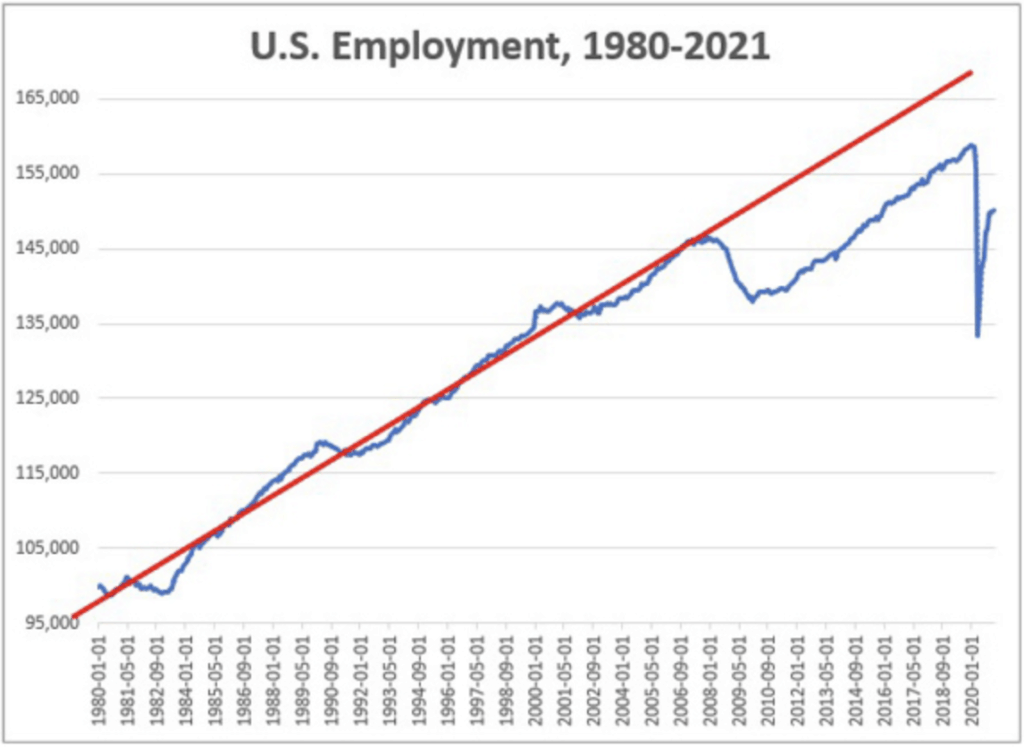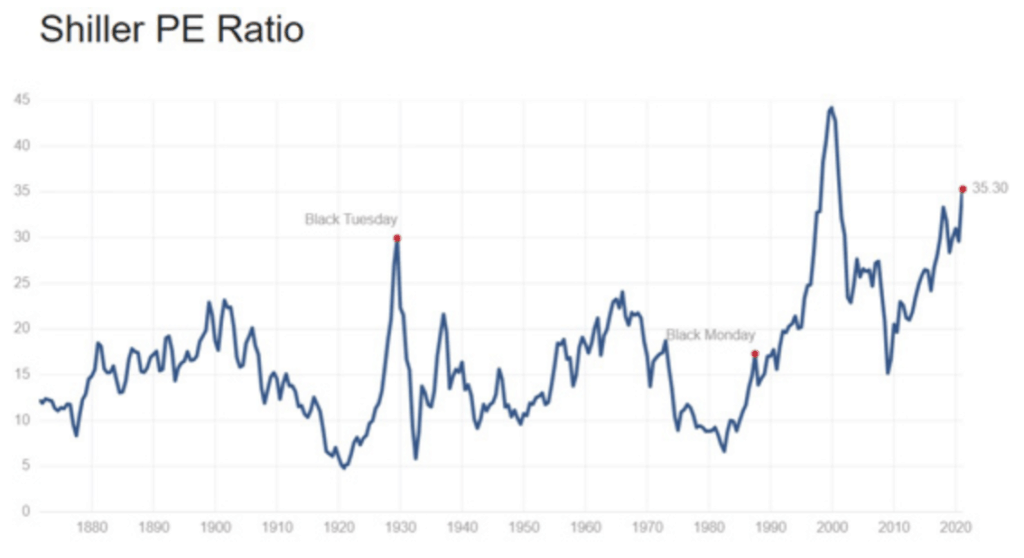When should you buy which stocks?
It’s one of the great questions of investing.
I’m not talking about specific companies.
I’m referring to the two main ways we categorize stocks: by sector and factor.
Sectors are easy. You’ve got technology, consumer discretionary, consumer durable, financials, energy and so on.
Factors are a little more complicated. Stocks are divvied up by market cap (micro, small, mid, large and mega) or by characteristic (value, growth, momentum, quality and volatility).
These classifications are important … and not because they let you put stocks into tidy piles.
For everybody except long-term, buy-and-hold types, knowing when to shift from one mix of sectors/factors to another is the key to making money in the stock market.
We’re on the cusp of one of those changes … and it’s time to get out ahead of it.
[Exclusive: Man Who Made EIGHTEEN 1,000% Recommendations Unveils #1 Stock]
PAST PERFORMANCE…
Of course, if you’re going to talk about sectors, the story of the decade has been technology.
But within that, there’ve been some substantial shifts. Here’s how various factors have performed over different time periods:
- Ten years: Large-cap growth.
- Five years: Small-cap growth.
- One year: Microcap growth.
See the pattern?
Over the longest period, big, fast-growing tech companies such as Amazon (NASDAQ: AMZN), Apple (NASDAQ: AAPL) and Alphabet (NASDAQ: GOOGL) have gained the most. But over time, ever-smaller companies have attracted the biggest gains.
That makes sense.
At the beginning of their growth path, tech companies enjoy high price-to-earnings (P/E) ratios. Those ratios fall as they become established players. At that point, earnings growth drives growth in their stock prices.
But investors like to chase the biggest possible gains. So their attention shifts to smaller companies closer to the beginning of their growth path. That’s why on a shorter time frame, small-cap tech stocks do the best.
[Alert: They Laughed, Yet FIVE of the Stocks He Named Went on to Soar Over 1,000%]
But that’s not the only force at work.
Two other factors have pushed investor money into ever-riskier technology stocks … culminating in the current special purpose acquisition company mini-boom.
One is the weakness of the consumer economy. As the chart below shows, employment never recovered from the great financial crisis of ‘08.
The gap between actual employment and the red long-term trendline shows how many jobs were lost and never recovered.
Since jobs translate into spending, it’s no wonder that classic consumer stocks have been far less attractive to investors. Speculative technology companies have been the only game in town over the last decade.
The other factor, of course, is the Federal Reserve’s policy of super-low interest rates.
[Read On: Legendary Stock-Picker May Have Cracked the Code to 1,000% Gains!]
As I’ve explained in recent Bauman Daily articles and videos, including yesterday’s edition of Your Money Matters, when interest rates are low, the present value of corporate earnings far out in the future is higher.
Basically, the Fed’s low interest rate policy has helped make small and microcap technology stocks — most of which represent companies that have no current earnings — more valuable than they would be otherwise.
But that could be about to change.
…IS NO GUARANTEE OF FUTURE RESULTS
The problem is that stock prices are like jet engines. They have a maximum altitude.
For jets, that’s when there isn’t enough oxygen to burn fuel. For stocks, it’s when their price-to-earnings ratios no longer make sense to most investors.
The chart below shows the cyclically adjusted P/E ratio for the U.S. stock market. It’s the second highest it’s ever been:
Like a jet, when the stock market reaches a certain altitude, there just isn’t much further it can run.
[Exclusive: Man Who Made EIGHTEEN 1,000% Recommendations Unveils #1 Stock]
That’s why I’ve been saying for a while now that investors should expect future returns from the decade’s highest-flying tech stocks to be lower in the coming years. They’re high enough already.
In other words, it’s time to find somewhere else to park your money.
Three factors make this even more urgent.
TIMING IS EVERYTHING
Talk about great timing.
On March 2, 2020, fund managers ETFMG launched a new exchange-traded fund (ETF) focused on — get this — the travel industry.
Just as the great COVID-19 panic took off.
Two weeks after its launch, the ETFMG Travel Tech ETF (NYSE: AWAY) was down 51%.
Oops.
But now, three things have turned that right around.
[Alert: They Laughed, Yet FIVE of the Stocks He Named Went on to Soar Over 1,000%]
- One is jittery bond markets. Last week’s flirtation with a 1.5% yield on the 10-year Treasury note sent growth stocks into a nosedive like a jet engine without oxygen. Yields pulled back a little yesterday, but the market is now primed to lead to other opportunities at a moment’s notice.
- The other is stimulus. Congress and the White House will approve a massive injection of money into the real economy this month.
- The third is the accelerating pace of COVID-19 vaccinations. The U.S. has gone from a slow start to being one of the fastest distributors in the world.
That means people will be traveling again. It also means investor money is going to start flowing away from overpriced speculative growth stocks in the tech sector, toward consumer-oriented companies poised to benefit from a boom in the real economy, like travel companies.
Unsurprisingly, AWAY is up 27.5% since the start of the year, versus 4% for the S&P 500 … and, in case you’re interested … only 0.2% for Tesla (Nasdaq: TSLA).
So, my advice is to start shifting some of your money toward the next big thing: companies that make good money from selling real people goods and services in the here and now.
I predict that’s going to give you a lot more alpha this year than sticking to last year’s formula.
Kind Regards,
Ted Bauman
Editor, The Bauman Letter
[Read On: Legendary Stock-Picker May Have Cracked the Code to 1,000% Gains!]


